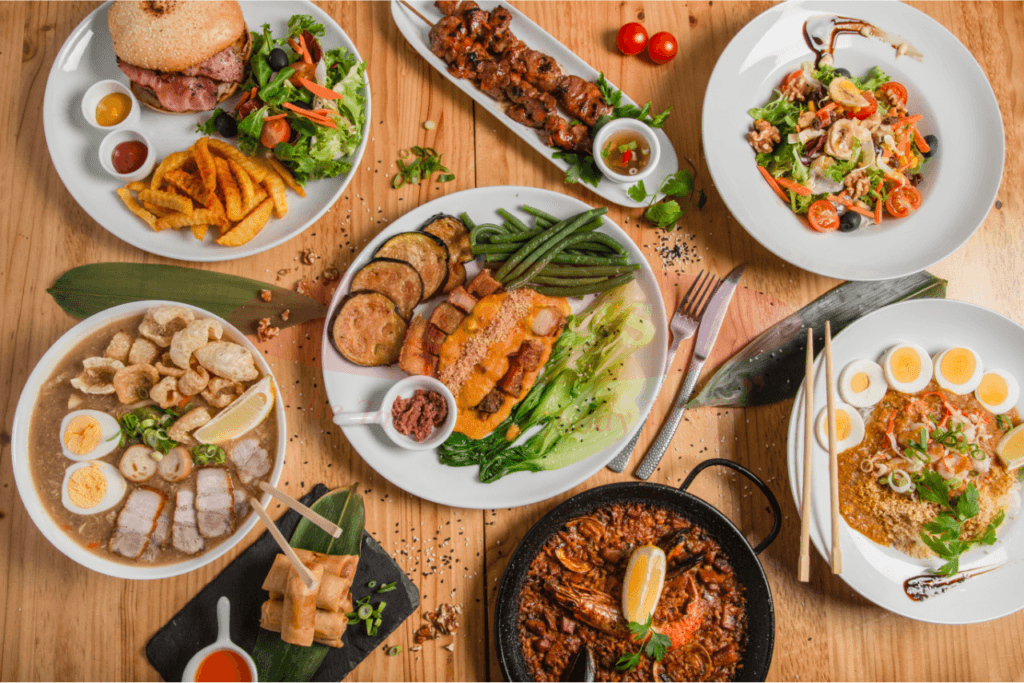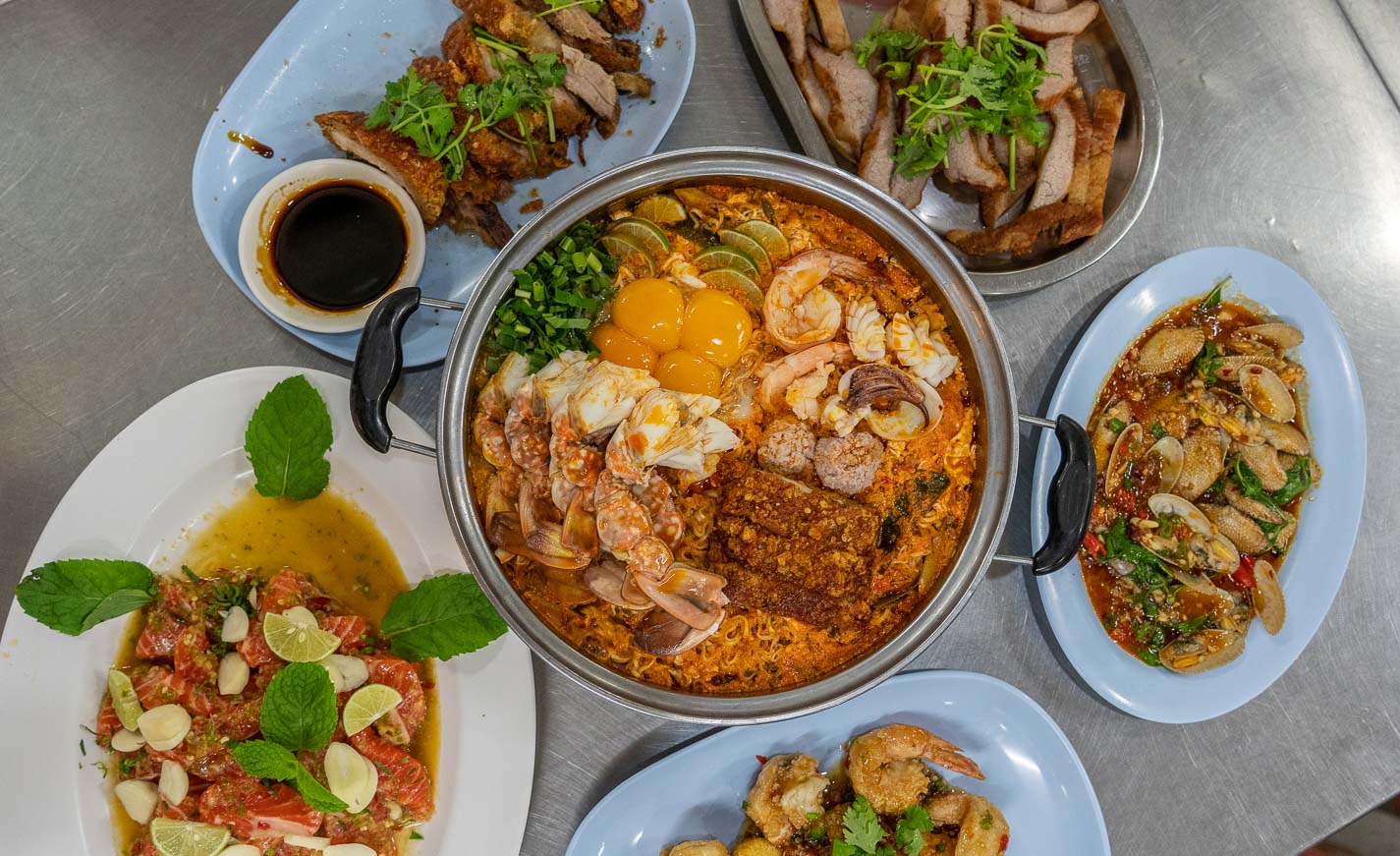Food Truck Equipment List: Your Blueprint for Mobile Culinary Success pickup.truckstrend.com
The allure of the open road, the freedom to choose your location, and the direct connection with hungry customers make the food truck industry an exciting venture. But beneath the vibrant wraps and delicious aromas lies a complex mobile kitchen, meticulously outfitted with specialized equipment. A comprehensive Food Truck Equipment List isn’t just a shopping list; it’s the fundamental blueprint for your entire operation, dictating your menu capabilities, operational efficiency, safety compliance, and ultimately, your profitability. Understanding and meticulously planning every piece of equipment is paramount to transforming your culinary vision into a successful, compliant, and thriving mobile business.
This guide will delve deep into the essential equipment categories, offering practical advice and insights to help you navigate the crucial decisions involved in outfitting your food truck.
Food Truck Equipment List: Your Blueprint for Mobile Culinary Success
I. Core Cooking Appliances: The Heart of Your Mobile Kitchen
The cooking equipment is where your culinary magic happens. Your menu will largely dictate the specific appliances you need, but certain items are mainstays in many food truck operations.
- Grills (Flat-Top & Charbroilers): Flat-top griddles are versatile workhorses, perfect for everything from burgers and sandwiches to breakfast items and stir-fries. Charbroilers offer that distinctive smoky flavor and grill marks, ideal for meats and vegetables.
- Considerations: Size is critical; you need enough cooking surface without overcrowding. Propane is the most common fuel source due to its portability, but ensure adequate tank storage and ventilation.
- Deep Fryers: Essential for crispy fries, onion rings, chicken tenders, or specialty fried items.

- Considerations: Single or double basket models depending on volume. Look for recovery time – how quickly the oil reheats after food is added – for efficiency during peak hours. Propane fryers are common.
- Commercial Ranges/Burners: For simmering sauces, boiling pasta, or sautéing ingredients. A two or four-burner range can be incredibly useful.
- Considerations: Opt for heavy-duty construction for durability on the road.

- Ovens (Convection or Pizza): Convection ovens offer even cooking and faster bake times, great for pastries, roasted items, or reheating. A compact pizza oven is a must for a pizza-focused truck.
- Considerations: Space and power requirements. Compact models are designed for smaller kitchens.

- Food Warmers/Steam Tables: Keep pre-cooked items at safe serving temperatures. Bain-maries, soup kettles, or countertop warmers are invaluable.
- Considerations: Ensure they meet health code temperature holding requirements. Electric models are common, requiring sufficient power outlets.
Practical Advice: Prioritize equipment that aligns directly with your core menu. Resist the urge to buy every shiny appliance; efficiency in a small space means multi-purpose tools and only what’s absolutely necessary for your signature dishes. Consider modular units that can be swapped out if your menu evolves.
II. Refrigeration and Storage Solutions: Keeping Ingredients Fresh
Maintaining food safety and freshness is non-negotiable. Proper refrigeration and dry storage are critical components of any food truck.
- Reach-in Refrigerators/Freezers: Standard upright units for bulk storage of ingredients.
- Under-counter Refrigerators/Freezers: Space-saving units that fit beneath prep tables, often with drawers for easy access to frequently used items.
- Prep Tables with Refrigerated Bases (Sandwich/Salad Prep Units): Combine workspace with integrated cold wells for ingredients, allowing for efficient assembly lines.
- Cold Well Units: For holding condiments, sauces, or pre-portioned items at safe temperatures.
- Dry Storage Shelving/Containers: For non-perishable goods, paper products, and cleaning supplies.
- Considerations: Maximize vertical space. Use clear, airtight containers for organization and pest control.
Important Considerations: Health department regulations heavily dictate refrigeration standards (e.g., holding temperatures). Ensure your units can maintain proper temperatures consistently, especially given the vibrations and temperature fluctuations of a mobile environment. Optimize for FIFO (First In, First Out) inventory management.
III. Preparation and Sanitation Hub: Efficiency and Hygiene
The prep area is where raw ingredients transform into culinary components, and where cleanliness is paramount.
- Stainless Steel Work Tables: Durable, easy to clean, and essential for food preparation.
- Considerations: Choose sizes that fit your space, possibly with undershelves for added storage.
- Sinks (Multi-Compartment & Handwash): Health codes almost universally require a three-compartment sink for washing, rinsing, and sanitizing dishes and utensils, and a separate handwash sink with soap and paper towel dispensers. A small utility sink for mop water can also be beneficial.
- Considerations: Ensure proper hot and cold water supply to all sinks.
- Cutting Boards: Multiple color-coded boards prevent cross-contamination.
- Knives and Knife Sharpeners: A good set of sharp knives is a chef’s best friend.
- Smallwares: A vast category including spatulas, tongs, ladles, measuring cups, mixing bowls, whisks, strainers, pots, and pans.
- Considerations: Invest in commercial-grade, durable items that can withstand constant use and movement.
- Food Processors/Blenders/Mixers: Depending on your menu, these can significantly speed up prep.
- Considerations: Countertop models are best for space constraints.
Practical Advice: Design your prep area for a logical workflow to minimize unnecessary movement and maximize efficiency in a tight space. Easy-to-clean surfaces and proper drainage are non-negotiable for sanitation.
IV. Power, Water, and Ventilation Systems: The Truck’s Lifeline
These systems are the unsung heroes, enabling your equipment to function and ensuring a safe and comfortable working environment.
- Commercial Generator: The heart of your food truck’s power. Propane, diesel, or gasoline generators are available.
- Considerations: Size (kW) is crucial; it must be able to handle the cumulative wattage of all your equipment, plus a buffer. Noise levels, fuel efficiency, and maintenance are also factors.
- Propane Tanks/Storage: If your cooking equipment runs on propane, you’ll need approved, securely mounted tanks (often two for redundancy).
- Fresh and Grey Water Tanks: Required for sinks and any water-using equipment. Fresh water tanks hold potable water, while grey water tanks collect wastewater.
- Considerations: Grey water tank capacity must be at least 15% larger than the fresh water tank by health code.
- Water Heater: Essential for hot water at your sinks, a health code requirement.
- Considerations: Tankless or small tank models are common for space and efficiency.
- Electrical Wiring and Outlets: All wiring must be commercial grade and installed by a certified electrician, meeting strict safety codes.
- Exhaust Hood System: A powerful exhaust hood with an integrated fan is critical for removing smoke, grease, and heat from the cooking area.
- Considerations: Must be sized appropriately for your cooking equipment and include fire suppression nozzles. Often, a make-up air system is also required to balance air pressure.
Challenges & Solutions: Power management can be tricky. Overloading your generator can lead to outages. Solutions include energy-efficient appliances, careful planning of equipment usage, and regular generator maintenance. Water conservation practices are also vital due to limited tank capacities.
V. Point-of-Sale (POS) and Serving Essentials: The Customer Interface
This equipment facilitates transactions and ensures your food reaches the customer smoothly.
- POS System: Tablet-based systems with integrated software are popular, handling orders, payments, inventory, and sales reporting.
- Considerations: Cloud-based systems offer flexibility. Look for ease of use, robust reporting, and reliable payment processing.
- Cash Drawer: For cash transactions.
- Receipt Printer: For customer receipts.
- Menu Boards: Digital screens or physical chalkboards to display your offerings and prices.
- Serving Utensils: Tongs, spatulas, ladles for serving food safely and efficiently.
- Disposable Containers, Cutlery, Napkins: Biodegradable options are a growing trend.
- Considerations: Factor in cost, environmental impact, and branding opportunities.
VI. Safety and Compliance Gear: Non-Negotiables for Operation
Safety equipment is not just about avoiding accidents; it’s about meeting stringent regulatory requirements.
- Fire Suppression System: An absolute must, usually integrated into the exhaust hood. It automatically discharges fire retardant chemicals in case of a fire.
- Fire Extinguishers (K-Class): Specifically designed for kitchen fires involving cooking oils and greases.
- First Aid Kit: Always keep a well-stocked kit on board.
- Non-Slip Floor Mats: Prevent slips and falls in a greasy, wet environment.
- Gloves, Hairnets, Aprons: Essential for hygiene and professional appearance.
- Cleaning Supplies: Brooms, mops, commercial-grade sanitizers, degreasers, and dish soap.
- Waste Management: Designated trash cans (with lids) and potentially recycling bins.
Key Takeaway: Health and fire department inspections are rigorous. Investing in proper safety and compliance equipment from day one will save you headaches, fines, and potential shutdowns. Consult your local regulations early in the planning process.
VII. Miscellaneous but Important Items
- Security Camera System: For monitoring your truck, especially overnight.
- External Signage & Branding: Crucial for attracting customers and building your brand identity.
- Sound System: For ambiance or drawing attention (where permitted).
- Initial Food Inventory: Don’t forget the cost of your first stock of ingredients.
Estimated Food Truck Equipment Costs (Table Price)
Please note: These are estimated price ranges in USD and can vary significantly based on whether you buy new or used, the brand, features, supplier, and professional installation costs. A fully custom new build can easily exceed $150,000.
| Category | Item/Description | Estimated Price Range (USD) | Notes |
|---|---|---|---|
| I. Core Cooking Appliances | Flat Top Grill (36-48 inch) | $1,500 – $5,000 | Commercial grade, propane preferred. |
| Deep Fryer (2-basket) | $1,000 – $4,000 | Propane, high recovery. | |
| Commercial Range/Burner (2-4 burner) | $800 – $3,000 | Heavy-duty, compact. | |
| Convection Oven (Compact) | $2,000 – $8,000 | For baking/roasting. | |
| Food Warmer/Steam Table | $500 – $2,500 | Electric or propane. | |
| II. Refrigeration & Storage | Reach-in Refrigerator (20-30 cu ft) | $1,500 – $6,000 | Capacity based on menu. |
| Under-counter Freezer | $1,000 – $4,000 | For frequently accessed frozen items. | |
| Prep Table w/ Refrigeration (48-60 inch) | $1,800 – $5,000 | Integrated cold storage for prep. | |
| Stainless Steel Shelving | $100 – $500 | For dry goods, cleaning supplies. | |
| III. Preparation & Sanitation | Stainless Steel Work Table (48-72 inch) | $200 – $800 | Durable prep surface. |
| 3-Compartment Sink | $700 – $2,500 | Health code requirement for dishwashing. | |
| Handwash Sink | $150 – $400 | Dedicated for handwashing. | |
| Basic Knife Set & Cutting Boards | $150 – $400 | Essential smallwares. | |
| Assorted Smallwares (Tongs, Spatulas, etc.) | $200 – $500 | Initial stock of essential kitchen tools. | |
| IV. Power, Water & Ventilation | Commercial Generator (5-10 kW) | $1,500 – $8,000 | Propane or diesel. Sizing is critical. |
| Fresh Water Tank (30-50 Gallon) | $150 – $500 | For potable water supply. | |
| Grey Water Tank (45-75 Gallon) | $150 – $500 | Must be 15% larger than fresh water tank. | |
| Water Heater (Small/Tankless) | $200 – $800 | For hot water to sinks. | |
| Propane Tanks (2 x 100 lb) | $200 – $600 | Securely mounted. | |
| Exhaust Hood System w/ Fire Suppression | $2,000 – $10,000 | Includes fan, ductwork, and integrated suppression system. | |
| V. POS & Serving Essentials | POS System (Hardware) | $500 – $2,000 | Tablet, printer, cash drawer. Software is recurring fee. |
| Menu Board | $100 – $500 | Physical or digital. | |
| Initial Stock of Disposables | $200 – $500 | Cups, plates, cutlery, napkins. Ongoing cost. | |
| VI. Safety & Compliance | K-Class Fire Extinguisher | $150 – $400 | Specific for kitchen fires. |
| First Aid Kit | $20 – $50 | Basic. | |
| Non-slip Floor Mats | $50 – $200 | For safety. | |
| Overall Truck Costs | Bare Food Truck Shell | $30,000 – $80,000 | Empty truck, ready for interior build-out. |
| Fully Equipped Used Truck | $30,000 – $70,000+ | Varies greatly by condition, age, and existing equipment. | |
| Fully Equipped New Truck | $70,000 – $150,000+ | Ready to operate, custom builds can exceed $200,000. |
Conclusion: Equipping Your Dream
Building a food truck from the ground up or purchasing a pre-built unit is a significant investment. The Food Truck Equipment List is more than just a collection of items; it’s the operational framework that determines your truck’s capabilities, efficiency, and compliance. By carefully considering your menu, understanding space constraints, prioritizing essential safety features, and planning for robust utility systems, you lay the groundwork for a successful mobile culinary venture. Remember, the right equipment is an investment in your business’s longevity, allowing you to deliver delicious food safely and efficiently, no matter where the road takes you.
Frequently Asked Questions (FAQ)
Q1: What’s the single most important piece of equipment for a food truck?
A1: While all equipment is crucial for operation, the generator/power system is arguably the most critical. Without reliable power, none of your cooking or refrigeration equipment can function. Following closely are your primary cooking appliances, which define your menu.
Q2: Should I buy new or used food truck equipment?
A2: Buying used equipment can significantly reduce initial costs, especially for items like stainless steel tables or sinks. However, for critical components like refrigerators, fryers, or the generator, new or certified used equipment often comes with warranties and greater reliability. Always have used equipment inspected by a professional before purchase.
Q3: How much does it cost to fully equip a food truck?
A3: The cost varies widely. A used truck with basic equipment might start around $30,000 – $50,000. A new, custom-built truck with high-end equipment can range from $70,000 to well over $150,000, depending on complexity and features. The table above provides a breakdown of individual equipment costs.
Q4: What permits and inspections are related to food truck equipment?
A4: You’ll face rigorous inspections from your local Health Department (for sanitation, refrigeration, sinks, hot water), Fire Department (for fire suppression, propane lines, ventilation), and potentially Electrical/Plumbing Inspectors. Ensure all installations are done by certified professionals to meet local codes.
Q5: How do I calculate the right size generator for my food truck?
A5: List all your electrical equipment and their wattage. Sum these wattages to get your total running wattage. Add 10-20% for a buffer, and then consider the "starting wattage" (peak power needed when appliances like refrigerators or air conditioners first cycle on). Your generator’s running watts should meet your total running wattage, and its surge watts should meet your highest starting wattage.
Q6: What are the key health code requirements for equipment?
A6: Core requirements often include: a three-compartment sink for washing/rinsing/sanitizing, a separate handwash sink with hot and cold running water, proper refrigeration to maintain safe food temperatures, an adequate ventilation system (hood and fan), and a certified fire suppression system. Consult your local health department for specific regulations.
Q7: How do I maintain my food truck equipment?
A7: Regular cleaning after each shift is crucial. Schedule routine professional maintenance for your generator, refrigeration units, and fire suppression system. Check propane lines, water connections, and electrical wiring periodically for wear and tear. Proper maintenance extends equipment life and prevents costly breakdowns.
